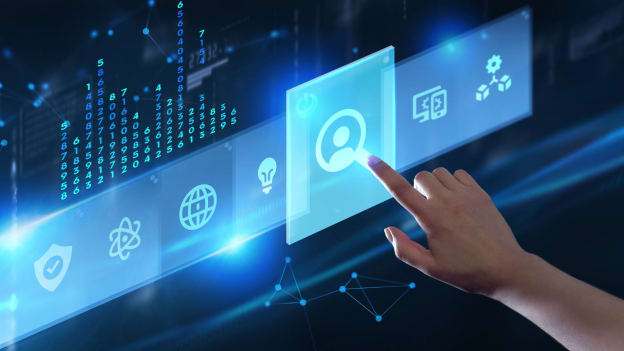Streamlined work tools, seamless workflows: Key strategies and insights for a connected workforce

A distributed workforce does not have to be a disconnected workforce. As the world of work evolves with modern tech, HR leaders need to be equally innovative and intelligent in leveraging HR technology solutions and driving organizational growth and productivity.
HR tech trends driving employee experience (EX)
Today’s employees want to have information quickly and on demand. Differences in demographics, geographic areas, specialisations and skills mean that employees have specific needs.
“We live in an age of hyper-personalization; employees are looking at how organizations can personalize specific to their needs and requirements,” shares Sujay Bhat, HR Technology Strategy Advisor, SAP Success Factors.
HR tech is able to support this experience for a digitally mobile and distributed workforce by providing critical information through multiple devices. Artificial Intelligence and Machine Learning aid social collaboration and affect how employees feel and interact with peers, thereby fostering knowledge-sharing and learning. It also helps employers take decisions using people analytics and measuring what decisions work. Employees want empowerment in managing their career path, with access to opportunities via an internal organisational talent market. Above all, employees want to be heard. Pulse surveys and sentiment analysis help understand employees and, therein, build an employee's journey in the organization. These tech trends influence how employees experience the workplace today and make HR more strategic.
“From standalone apps to full stack apps, HR tech is getting information centralised for organizations,” says Jusman Hutama, Group Head Human Capital & Services, PT Asuransi Tugu Pratama Indonesia Tbk.
HR tech in a hybrid era
Jusman believes that in the hybrid era, tech can help make employees productive and safe and better integrate a corporation as a big family. This has business value because it will aid companies in expanding efficiently and productively by operating from anywhere. Sujay agrees, “Tech plays the role of a leveller for all kinds of employees, delivering the same experience in consuming HR practices and policies”. Especially for a widely distributed workforce, HR tech plays three critical roles i.e.
- Connects people with one another and with the organization by informing employees about various policies and practices available to them.
- Engages people with respect to their development for current role and future roles and offers insights into opportunities to help people chart their own career progression.
- Empowers employees to access critical information and stay connected with the organization
Hybrid working has catapulted the need for a true two-way connection-based employee experience.
How to develop and design HR tech for great EX?
Designing the employee experience (EX) begins with:
- Defining where the company is headed and what purpose of employee experience the top management aims for.
- Listening to employees and understanding their needs ensures better retention and productivity for employees and organization.
Sujay shares how all organizations are redefining the customer journey, keeping the customer right at the customer experience centre. The same applies to formulating the employee experience (EE). It involves structuring policies and practices to meet employee expectations, being agile to adapt to evolving needs, and at the same time, making tech processes easy to access, easy to use, and easy to adapt. “Use design thinking methodology to plan micro-journeys within the employee journeys in the organization," suggests Sujay.
Jusman suggests that leaders should make a choice of best-of-breed versus best-of-suite solutions, basis the purpose of the organization. “If everything is in place, best-in-breed is suitable, if the organization is new and has to create the EE from scratch, then a flexible best-of-suite solution will help leaders learn how to build features in the application”. Sujay believes that a best-of-suite solution offers an a-modular experience where the employee journey cuts across functionalities, focusing on the experience element. For example, learning is about on-demand consumption of learning and today’s 360-degree learning touches core HR, recruitment, onboarding, role change, performance, and many more facets. HR has evolved from HRM to HCM to HXM i.e. human experience management, which best-of-suite aligns with. The key is to harness the right technology and build a strong base.
Tech as a foundation for EX design
“Analytics brings many possibilities because knowing employees through data, we can create better EX”, says Jusman. While it is a top-of-mind priority for all leaders, Sujay believes that it is important to differentiate between reporting and analytics, “A lot of organizations are lacking in data and reporting, they need to prepare themselves for the next stage i.e. accurate data in a single instance.”
Leaders need to answer the ‘Why’ and learn how to leverage and use data comparisons, correlations, hypotheses, standards and templates to drive transformation. It has to be an out-of-the-box approach, drilling down into a reason and rolling it up into execution. “Get insights and actions, not because everyone is doing analytics, but to understand how the tool will help seek speed-to-market”, says Sujay.
This starts with building discipline in data-handling by developing the internal competencies to leverage the data points and make them part of an ongoing continuous improvement process. “Building dedicated excellence within the HR function to focus on predictive analysis, and to influence with evidence to fine-tune policies and practices is critical”, says Sujay.
Only with high usage can organizations make reporting and analysis work. “To ensure adoption, we have to make people understand what is important for them and for the organization’s digital success, especially in a remote working setup”, says Jusman. Sujay believes that adoption can be driven by making systems easy to use and effective by continuously asking the end users, i.e. employees, business users, and HR, for feedback. Other metrics to be tracked are operational efficiencies, time-savings, cost-ownership, lead-time for the rollout of new functionalities, effectiveness KPIs like promotion rates and training penetration etc. These metrics will differ for different organizations based on what they want to drive.
Therefore, it becomes important to know the baseline current performance and then improve on the defined value-drivers of HR technology. Above all, with the prevalent velocity of change and on-demand culture, companies need to be agile in their HR tech approach to provide the same on-demand, on-tap experience to a diverse and distributed workforce.
















